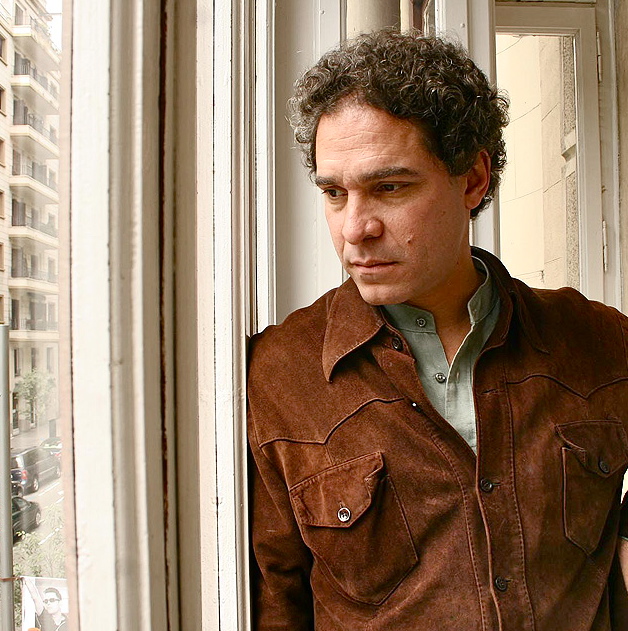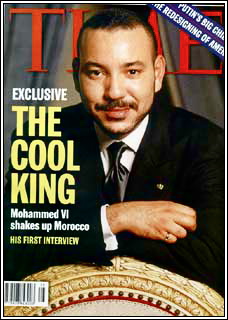“Rodrigo Rey Rosa is the most rigorous writer of my generation, the most transparent, the one that knows best how to weave his stories, and the most luminous of all.”— author Roberto Bolano.
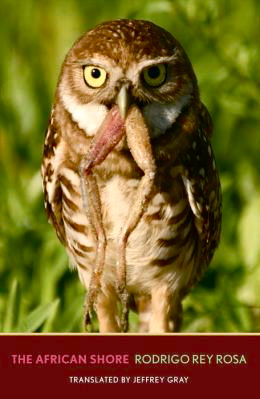 Though he has been lauded by Roberto Bolano and many other Latin American authors and critics, Guatemalan author Rodrigo Rey Rosa, has been a well-kept secret to most English-speaking readers. Of his almost two dozen works published to acclaim in Latin America, only four have been published in English, and three of those are translations into English by famed American expatriate author Paul Bowles, who was Rey Rosa’s literary mentor. Living in Morocco while he translated several of Paul Bowles’s novels into Spanish, Rey Rosa came to know the country well, finding life on the African shore of the Mediterranean markedly different from that of the European shore represented by France and Spain, both of which had claimed Morocco as a protectorate until after the mid-1950s. Rey Rosa’s most recent novel to be translated (by Jeffrey Gray), The African Shore, sweeps the reader into a world in which Europeans still see some aspects of their cultures in Morocco in the late 1990s – the varied cultures contributing to a Moroccan society that is often magical, elusive, and mysterious, but which is also filled with ominous hints about a future which may change dramatically as the country continues in its own direction and establishes its own identity under its own leaders.
Though he has been lauded by Roberto Bolano and many other Latin American authors and critics, Guatemalan author Rodrigo Rey Rosa, has been a well-kept secret to most English-speaking readers. Of his almost two dozen works published to acclaim in Latin America, only four have been published in English, and three of those are translations into English by famed American expatriate author Paul Bowles, who was Rey Rosa’s literary mentor. Living in Morocco while he translated several of Paul Bowles’s novels into Spanish, Rey Rosa came to know the country well, finding life on the African shore of the Mediterranean markedly different from that of the European shore represented by France and Spain, both of which had claimed Morocco as a protectorate until after the mid-1950s. Rey Rosa’s most recent novel to be translated (by Jeffrey Gray), The African Shore, sweeps the reader into a world in which Europeans still see some aspects of their cultures in Morocco in the late 1990s – the varied cultures contributing to a Moroccan society that is often magical, elusive, and mysterious, but which is also filled with ominous hints about a future which may change dramatically as the country continues in its own direction and establishes its own identity under its own leaders.
Rey Rosa reflects upon these changes as he presents three interrelated scenarios, in which three separate characters express their own points of view and live independent lives which sometimes overlap with other lives within the book. Rey Rosa composes these separate scenarios so carefully that each could stand alone as a short story or novella, and they are often so poetic and filled with lyrical details that critics have described them as “prose poems.” Part I takes place in the rural countryside and features Hamsa, a young shepherd whose vision of the world is colored by local superstition, a belief in animism, and a long history filled with traditions. He understands the natural world, which is beautifully evoked in sensuous terms – the wind “rattling branches and leaves like a thousand maracas” and paths winding through thickets of thorns to “keep away the djinns which hated thorns,” and which was why the Muslims let thorns grow on their family graves.
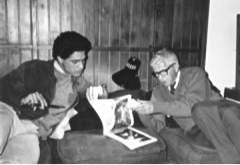
Rodrigo Rey Rosa with his mentor Paul Bowles. Photo copyrighted by Cherie Nutting and posted with her permission.
Hamsa describes his life with an ingenuous honesty – his hopes for an improved life, his willingness to be used by his uncle in illegal activities so that he will eventually have “cars and as many women as you want,” and even his enjoyment of kif. His rescue of a drowning sheep, at the risk of his own life, leads to his near death in the surf, and his recovery is complicated by a high fever. When his grandparents take care of him at the Monte Viejo estate of Mme. Choiseul, where the grandparents work, the author sets up casual contrasts in their life styles. It is Hamsa who later captures an owl with a wounded wing, which becomes a mystical symbol repeating throughout the novel.
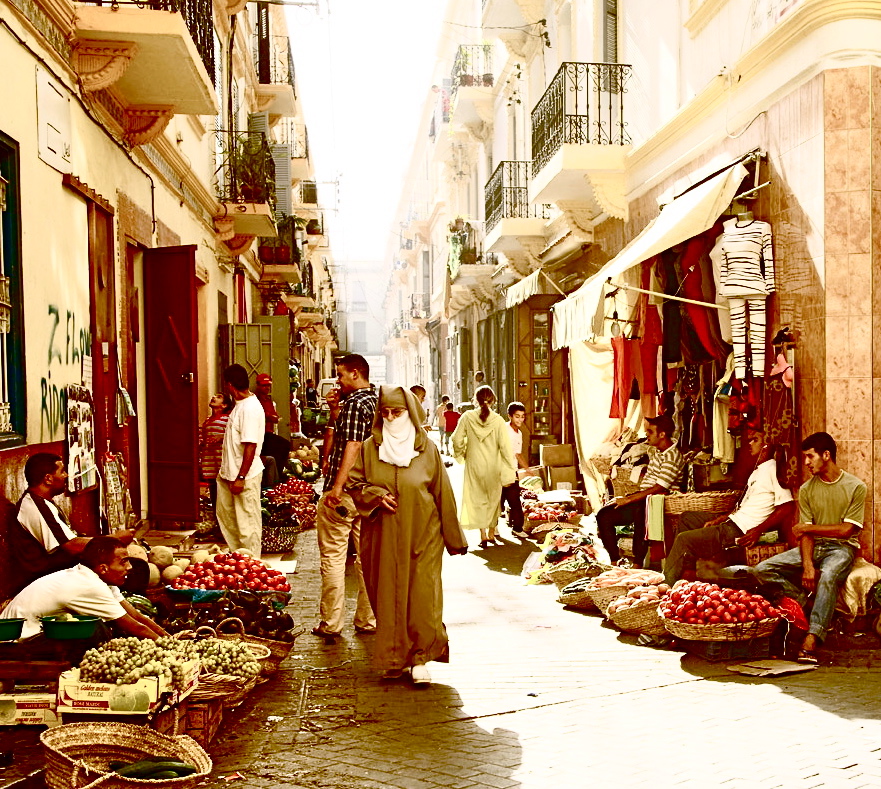
Colombians who lost their passports had to see the Honorary Consul in an office in the Casbah, Tangier.
In the second and longest section, “Skulls,” a Colombian who has lost his passport during a night of carousing, prepares to apply for a new one in Tangier. Through his eyes, the role of the Sultan, the culture of the city in which women resort to prostitution as a way to gain a dowry, and the lively local drug culture are all revealed. The involvement of the Colombian Mafia in drug sales is no secret, and the corruption of the Colombian “honorary consul” in granting a passport is taken for granted. As this Colombian traveler moves through the city, he sees a young boy selling an owl with a wounded wing and purchases it. He meets up with two French women – an older woman who owns property from the days of the French protectorate and a younger woman of his own age – and travels with them to their house in Monte Viejo. Again, the wounded owl and the despoliation of the natural world add a sense of mystery and ominous prescience to the narrative as the Colombian traveler experiences Morocco.
Part III gives new meaning to the symbol of the owl and the actions of the characters, as Laura, the wife of the Colombian, who has remained behind in Cali, describes what is happening there regarding her husband’s missing passport and with the job to which he has intended to return. As the Colombian continues his life in Morocco and then plans a further trip to Spain, the sinister overtones deepen, with repeating images of a cat suggesting the uncertainties regarding the future.
Elegantly written, The African Shore conveys much information about cultures, past and present, along with the people who straddle the worlds of Europe and Africa. The animism of the rural farmers, which infuses their lives with magical explanations; the Muslim culture, which provides comfort and identity to large numbers of people from all levels of society; and the criminality which seems to be filling a vacuum in the wake of the country’s independence from Spain and France, all play a role in the imagery and symbolism which connects the many facets of this marvelous work. The author conveys information simply, subtly, and poetically, allowing the reader to participate by “accompanying” the three speakers as they live their parallel but very different lives. The haunting atmosphere which results is far from romantic, hinting at ominous outcomes, even menace, as people work in their own best interests with little sense of a common purpose or fate. The theme of change is tied to nature, its seasons, and its extremes, at the same time that it often originates in human nature, with all its urges and constraints, both personal and cultural.

In February, 2014, Yale University Press released another new translation by Rodrigo Rey Rosa, SEVERINA, a novel about a bookseller.
Stunning in the simplicity and clarity of its style, this novel says a great deal in very few words, and the ending is perfect. The final scene between Hamsa, who has cured the owl’s injured wing, and a Christian woman who has come to purchase the owl, is darkly ironic, revealing more about the separate cultures than any sociological treatise could possibly convey. As Hamsa tries to reach a bargain with the Christian woman, all the twists of fate and all the ironies involved in these characters’ separate lives converge, with only the owl having the perspective to see the world for what it is.
Photos, in order:
The author’s photo by EFE may be found on http://noticias.emisorasunidas.com
The photo of Rodrigo Rey Rosa and Paul Bowles, copyrighted by Cherie Nutting and posted with her permission, appears on www.paulbowles.org.
The Casbah, where the “honorary consul” for Colombia had his office, is seen on this site: http://travel.aol.co.uk/
Mohammed VI succeeded to the throne of Morocco on July 23, 1997, upon the death of his father, King Hassan II. http://www.usa-morocco.org/
ALSO: Severina, by Rodrigo Rey Rosa, set in Guatemala, was published in translation by Yale University Press in February, 2014.
ARC: Yale U. Press
